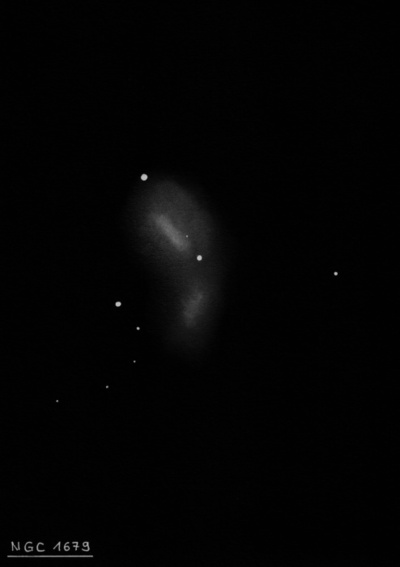
John Herschel discovered NGC 1679 = h2666 on 18 Nov 1835 and described "pB, L, irreg round; involves four stars, and is very gradually brighter about the chief of them." Joseph Turner sketched the galaxy on 24 Nov 1877 with the Great Melbourne Telescope. He drew it boomerange shaped with one side between the mag 12 star at the north edge and the 13th mag star on the east side (central part of galaxy) and a second side beginning at the mag 13 star extending southwest (this section is an irregular spiral arm). He also sketched nebulosity south of the 12th mag star. (p. 150 in logbook).
400/500mm - 17.5" (1/23/93): moderately bright and large, 2' diameter, irregularly round, brighter core. Unusual appearance as four stars are closeby; a mag 12 star is at the NW edge, two mag 13/14.5 stars are near the SW edge and a mag 13.5 star at the E edge. This is a fairly bright galaxy for low elevation viewing. Images reveal an irregular extension on the south side.
Notes by Steve Gottlieb